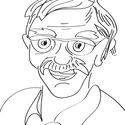-
About
- About Listly
- Community & Support
- Howto
- Chrome Extension
- Bookmarklet
- WordPress Plugin
- Listly Premium
- Privacy
- Terms
- DMCA Copyright
- © 2010-2025 Boomy Labs


 Jeff Nevil
Jeff Nevil
Listly by Jeff Nevil
There have been three key influencers on the general advancement of humanity: agriculture, industrialisation and science. However, one sub-section of science, which has occupied the minds of some of the world’s greatest minds for centuries has been medicine.

Discovered by Alexander Fleming in 1928, Penicillin was almost entirely done so by accident. During an experimental phase, Fleming went on holiday and left dishes of bacteria in his laboratory next to an open window. Two weeks later, he returned to observe that mould which had grown on the dish was actively repelling the bacteria around it.
This fortuitous discovery became the very first antibiotic and was destined to revolutionise medicine. Both Penicillin and the antibiotics developed from this discovery are still used today to treat a variety of viruses and infections by combating bacteria within the body. While the western world is currently undergoing an antibiotic crisis, in the past if an individual was to have a cut to a limb and it became infected, they would have to choose between amputation or death.

DNA is one of the World’s most easily recognised scientific acronyms and stands for deoxyribonucleic acid. Swiss physician, Friedrich Miescher was the first known scientist to achieve a breakthrough in the area while he was studying nucleic acids in white blood cells and how this could be linked to heredity conditions. However, it was Nobel Prize winners, Francis Crick and James Watson, who discovered an important structure in protein and first produced the double-helix model.
This discovery unpicks the fabric of who we are, from eye colour to genetic disease, and has formed the groundwork for many of the world’s most recent medical discoveries. DNA has led to scientists identifying and understanding more and more disorders, such as Sickle Cell Disease and Down’s syndrome. Other fields have benefited from the discovery as well, such as forensics in criminology and paleontology for historians.

Whether it is at the hospital or the dentist, most individuals will have experienced an X-ray. The medical procedure has become a staple part of modern life that many forget that it was first discovered in 1895 by mistake. Wilhelm Conrad Röntgen noticed that his cathode ray tube was able to produce some unusual images, he later x-rayed his wife’s hand to discover that her bones and ring were visible, but the flesh was not.
It was named the X-ray because in mathematics ‘X’ is used to indicate the unknown quantity but before this discovery, identifying and repairing broken bones was significantly more difficult, while other diagnoses were determined by exploratory surgery, often leading to death. The discovery of the X-Ray has led to the development of modern imaging such computerised tomography (CT) and magnetic resonance imaging (MRI), aiding the fight against tumours, aneurysms, blood cots and many other problems.

Most medical discoveries are focused around preventing or delaying death, however In vitro fertilisation (IVF) focuses purely on creating life. IVF is a medical procedure whereby an egg is fertilised by sperm outside the body. The first discoveries in the area date back to the 1950s, but 1978 is widely regarded as the date that the breakthrough came to fruition, as the first “test-tube baby” was born.
Despite receiving some negative press for concerns over ‘designer’ babies, as well as being outlawed by the Catholic Church, IVF has led to millions of babies being born to couples worldwide. In addition, the field of study has also allowed scientists and clinical trial support to develop other techniques to help with conception, as well as preventing some hereditary cancers from being passed on.

The last medical breakthrough on the list is used daily basis worldwide by diabetics, it is the life-saving hormone Insulin. This hormone controls the level of sugar within our blood, with diabetics either missing the hormone entirely or producing it in a way that the body cannot use. Scientists had been attempting to rectify this illness since 1869, however the official breakthrough did not occur until 1921, when it was discovered by Frederick Banting and a team at the University of Toronto.
Diabetics can now live a very full and active life, it is difficult to believe that diabetes was considered a terminal condition, often leading to a slow and unpleasant death. While the disease is still not currently curable, this discovery could prove vitally important in the future given the rising obesity rate being experienced in the UK.
